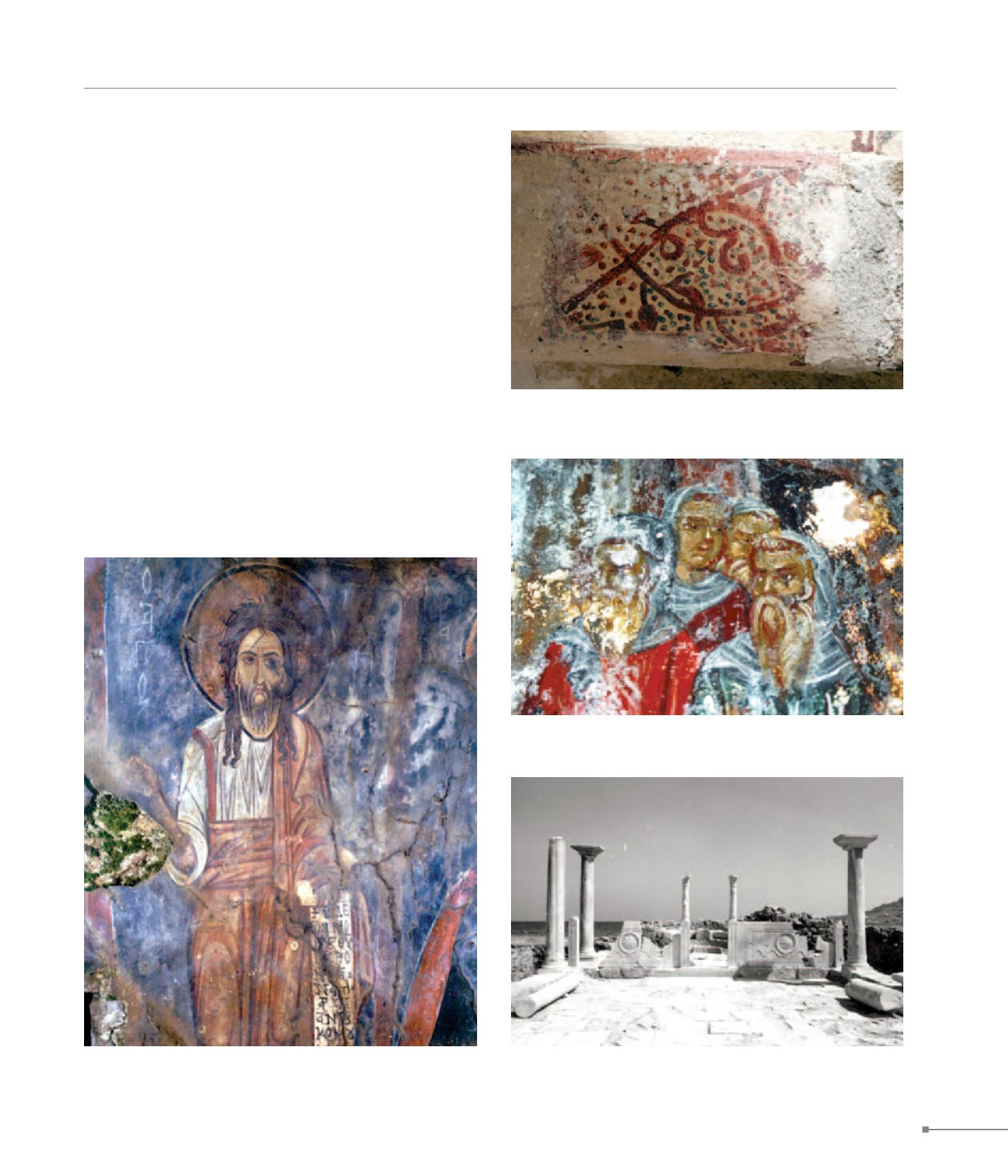
Karpathos. Saria.
Karpathos. Saria.
THE ISLANDS
411
611. Karpathos, Panagia at Inia, wall painting (Κάρπαθος, Παναγία στα
Ίνια, τοιχογραφία)
611. Karpathos, Olympos, Saint Anne, wall painting (Κάρπαθος,
Όλυμπος, Αγία Άννα, τοιχογραφία)
611. Karpathos, Saint Luke at Apella, wall painting (Κάρπαθος, Άγιος
Λουκάς στα Άπελλα, τοιχογραφία)
611.
Karpathos. Saria.
Karpathos flourished in the 5th and 6th c. as it had well-es-
tablished harbours, a commercial fleet, and was rich in raw
materials. The island’s prosperity at this time is indicated by
the numerous Early Christian monuments, preserved mainly
at the sites of ancient cities. Five Early Christian basilicas have
been detected at the site of present-day Arkasa (6), where the
see of Karpathos was based: the basilica of Bishop Kyros (5);
Aghia Anastasia (4) in its second building phase (as attested
by an inscription on the mosaic floor); the basilica of Presbyter
Eucharistos (also known by an inscription on a mosaic floor),
where today stands the later church of Saint Constantine; the
basilica of Saint Nicholas, on the ruins of which was built the
saint’s chapel; the funerary basilica of Archangel Michael; and
finally the basilica at Palaiokastro Arkasas (6). At Pigadia, the
present capital of Karpathos, the basilica of Aghia Photeine
(Aphoti) (1) has been excavated, and three further basilicas
have been detected. Recently one more basilica was brought
to light at the Kefali site at Vronti Bay (8). A basilica with numer-
ous architectural sculptures (3) has been detected at Afiartis,
611. Karpathos, Pigadia, Afoti basilica (Κάρπαθος, Πηγάδια, βασιλική
της Άφωτης)


